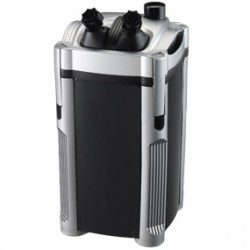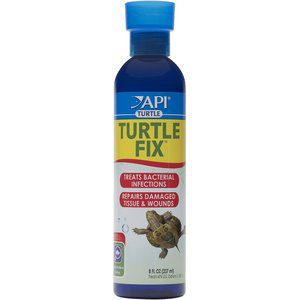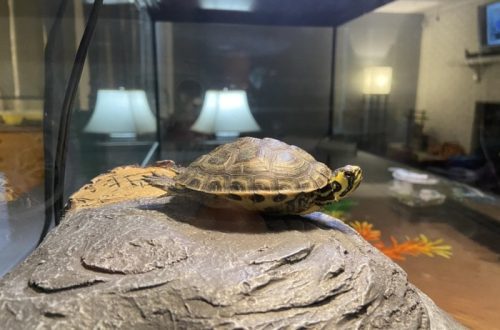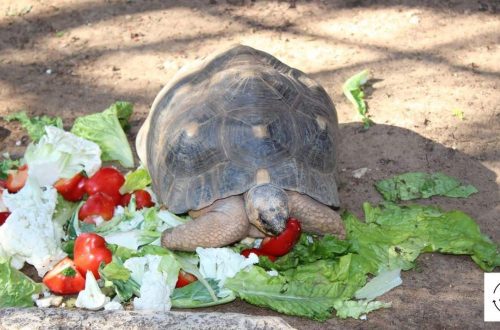
Aquarium filter – all about turtles and for turtles
In order for the water in the turtle aquarium to be clean and odorless, an internal or external aquarium filter is used. The structure of the filter can be anything, but it should be easy to clean, attach well to the walls of the aquarium, and clean the water well. Usually the filter is taken to a volume that is 2-3 times the actual volume of the turtle aquarium (the aquarium itself, not the water), since turtles eat a lot and defecate a lot, and filters that are designed for the actual volume of the aquarium can not cope.
It is recommended to use an internal filter for aquariums up to 100 l, and an external one for larger volumes. The internal filter should be cleaned about once a week (take it out and rinse under running tap water), and the external filters are cleaned much less often (depending on the volume of the filter and whether you feed the turtle inside the aquarium). Filters are washed without soap, powder and other chemicals.
Filter types:
Internal filter is a plastic container with perforated side walls or slots for water inlet. Inside contains a filter material, usually one or more sponge cartridges. At the top of the filter is an electric pump (pump) for pumping water. The pump can be equipped with a diffuser, which allows you to use this device for aeration. All this device is immersed in water and attached from the inside to the side wall of the aquarium. Sometimes charcoal or other natural filter elements are placed in place of or along with the sponge. The internal filter can be placed not only vertically, but also horizontally or at an angle, which is convenient in turtle tanks where the water height is relatively low. If the filter does not cope with water purification, replace it with a filter designed for a larger volume or start feeding the turtle in a separate container.
Most external mechanical filtersused by aquarists are the so-called canister filters. In them, filtration is carried out in a separate volume, resembling a tank or canister and taken out of the aquarium. The pump – an integral element of such filters – is usually built into the top cover of the housing. Inside the housing there are 2-4 compartments filled with various filter materials that serve for coarse and fine cleaning of the water pumped through the filter. The filter is connected to the aquarium using plastic pipes.
Also on sale are decorated filters – Tetratex DecoFilter, that is, when the filter is disguised as a waterfall rock. They are suitable for aquariums from 20 to 200 liters, provide a water flow of 300 l/h and consume 3,5 watts.
Most red-eared turtle owners recommend using the Fluval 403, EHEIM filter. The external filter is more powerful, but also larger. It is better to take it if there are a lot of turtles, or they are very large. For a few small turtles, internal filters are used, which are available at many pet stores.
Tetratec GC can be used to clean the soil, which will help replace water and remove dirt.
How to fix the filter so that the turtles do not take it down?
You can try to change the Velcro, fill up with heavy stones. You can also try using a magnetic holder, but it has limitations on the thickness of the glass. It is quite effective to hide the filter and heater in a separate box so that the turtle does not have access to them. Or change the internal filter to an external one.
Turtle is blown away by a filter jet
It is impossible to pull it partially out of the water – there is a chance to burn the filter (unless, of course, such a method of immersion is written in the instructions), it is better to simply reduce the pressure of the filter, if this is not possible, put a flute (a tube with holes on the filter output), if this is not there either , direct the pressure to the wall of the aquas, and if this does not help (the filter is too powerful), then turn the filter horizontally and make sure that the tube is directed to the surface of the water, but the filter itself is completely in the water. By adjusting the depth of immersion, you can achieve the fountain up. If it doesn’t work out, it’s okay, the turtle will most likely learn to cope with the filter jet over time.
The turtle breaks the filter and tries to eat the water heater
How to fence off the filter and heater: buy a plastic soft square sink grate and 10 suction cups at a pet store. Holes are drilled in the legs of the suction cups and the suction cups are tied to this grid with a nylon thread on both sides – top and bottom. Then a filter and a heater are placed and the grate is molded with suction cups from below to the bottom of the tank and from above to the side wall. Suction cups should be larger in diameter to make them harder to tear off.
The filter is noisy
The aquarium filter may make noise if it partially protrudes from the water. Pour in more water. In addition, faulty models or an empty filter that has just been installed and has not had time to fill with water may make noise.
Choosing an external aquarium filter
 The external canister aquarium filter got its name from the location of the filter outside the aquarium. Only the intake and outlet tubes of the external aquarium filter are connected to the aquarium. Water is taken from the aquarium through the intake pipe, it is driven directly through the filter with the appropriate fillers, and then, already purified and oxygenated water is poured into the aquarium. How useful is an external filter?
The external canister aquarium filter got its name from the location of the filter outside the aquarium. Only the intake and outlet tubes of the external aquarium filter are connected to the aquarium. Water is taken from the aquarium through the intake pipe, it is driven directly through the filter with the appropriate fillers, and then, already purified and oxygenated water is poured into the aquarium. How useful is an external filter?
- An external filter in an aquarium with aquatic turtles saves space and does not spoil the design. In addition, usually turtles cannot break it and get hurt, although there are exceptions.
- Easy to maintain – it is washed out no more than once a month, or even in 1 months. An external canister filter for an aquarium also creates a flow of water, it mixes, and also saturates the water with oxygen that is so necessary for fish and plants. In addition, colonies of bacteria grow and develop in the fillers of the external filter, which carry out biological purification of water from organic excretions of fish: ammonia, nitrites, nitrates, thus, external filters are biological.
Atman is a Chinese firm. Often referred to as the best Chinese filters. Production takes place at the same plants where JBL and other famous filters are assembled. The CF line is known and tested by many aquarists, no negative quality has been noticed. The DF line was developed in collaboration with JBL. The lines of these filters are fully equipped and ready to work, in contrast to the same Eheim Classic with outdated solutions, empty packaging and only a proud name. The filter is quite noisy compared to some others. Regular fillers are recommended to either immediately change or supplement with finer-pored sponges or padding polyester.
Aquael is a Polish company. Here you can look at the UNIMAX 250 (650l/h, up to 250l,) and UNIMAX 500 (1500l/h, up to 500l) models. Of the pluses – the fillers are included, the function of adjusting the performance, the built-in mechanism for pumping air from the filter and tubes, and it is also very quiet. Reviews are mostly negative: Aquael UNIMAX 150, 450 l/h canister – can leak from under the cap. Aquael Unifilter UV, 500 l / h – poorly purifies water, cloudy water, can not even cope with 25 liters.
Eheim – a well-known company and very good filters, but expensive, incommensurable with competitors. The best in reliability, noiselessness and quality of water purification.
Hydor (Fluval) is a German firm. Fluval filters of the 105, 205, 305, 405 line. Many negative reviews: weak clamps (breakage), grooves, sealing gum require lubrication. Of the successful models, FX5 should be mentioned, but this is a different price category. The most inexpensive German filters
JBL is another German company. The price is the most expensive of the above, but cheaper than Eheim. It is worth paying attention to two filters CristalProfi e900 (900l / h, up to 300l, canister volume 7.6l) and CristalProfi e1500 (1500l / h, up to 600l, 3 baskets, canister volume 12l). Filters are completely completed and ready to work. They are positioned as practical and reliable filters of modern design, which, by the way, is confirmed by many positive reviews. Of the minuses, only a complaint about a too tight pumping button was noticed.
Jebo – a convenient filter, the degree of contamination is visible, the cover is conveniently removed, it cleans the water well.
ReSun – reviews are bad. The filter can last a year and leak – the plastic is weak. With external filters, it is necessary to rely primarily on reliability – not everyone will like 300 liters on the floor.
Tetratec – German company, two models can be considered: EX700 (700l / h, 100-250l, 4 baskets,) and EX1200 (1200l / h, 200-500l, 4 baskets, filter volume 12l). The kit comes with filter materials, all tubes and it is completely ready for work. There is a button for pumping water, which makes it easier to start. Of the pluses, they note good equipment and quiet operation. Of the minuses: in 2008 and early 2009, a series of defective tetras came out (leaks and loss of power), which greatly tarnished the company’s reputation. Now everything is in order, but the sediment remains and the filters are looked at biased. When servicing this filter, it is advised to additionally lubricate the sealing gum with petroleum jelly or other technical lubricant, as they say, in order to avoid.






